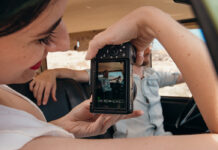
Mere months after launching its first full frame mirrorless camera in the EOS R, Canon is back again with an even smaller model in the EOS RP.
It’s a bold move, as this new model aims to offer DSLR-level full frame photography in a body that is noticeably smaller than the larger EOS R. It also bears similarities to its larger sibling, so if you’re interested in making a move to something better than an entry-level camera, this could be an option.
Compared to the EOS R
The EOS RP sports a slightly smaller 26.2-megapixel image sensor compared to the EOS R’s 30.3-megapixel one. That’s not a huge difference, given the size difference at work here. If there was a DSLR equivalent, it would be the Canon 6D Mark II, though the company says it’s not an exact copy.
To accommodate the smaller form factor, a few other things were shaved down a little as well. The electronic viewfinder (EVF) and LCD screen are only a sliver smaller than before (it also spins and rotates like before). There’s still only one memory card slot, though this camera uses a different battery in the LP-E17. That means you won’t be able to swap with an EOS R if you happen to use both. However, because other Canon cameras, like the EOS M and some Rebel DSLR models, use that battery, it is easy to find if you want to buy any backups.
The other small LCD the EOS R had at the top is not in this model. Neither is the touchpad that was situated to the top right of the screen in the back. Instead, Canon put an analogue dial there, making it a little more old school in switching between shooting modes.
You also get a weight reduction. With the SD card and battery, the EOS RP weighs in at 485 grams. The EOS R, in contrast, is 660 grams with the same components inside. Naturally, the EOS RP works with any of the RF mount lenses. Tack on an adapter to use EF mount lenses, and you have pretty much all of Canon’s glass at your disposal.

Shooting changes
Aside from the different image sensor, the EOS RP will shoot at a lower 5fps burst speed. It goes down to 4fps in Servo AF (autofocus), though that’s only marginally slower than the EOS R’s 5fps. That could make shooting fast action, like sports, a little more challenging.
Phase-detection AF is mostly the same, save for slower focusing in low-light settings. The max shutter speed is 1/4000 second instead of the 1/8000 in the EOS R. The Dual Pixel AF system previously available in all video settings, won’t apply when shooting in 4K with the EOS RP. Canon is also limiting framerate to 25fps in 4K, unlike the larger model’s ability to also do it in 30fps. It doesn’t appear anything has changed for 1080p, however.
The kit lens will be the 24-105mm f/3.5-5.6 IS STM. Canon is set to release another six RF lenses by the end of the year.
Connectivity looks to be the same as well, letting you transfer images to a smartphone via the built-in Wi-Fi connection and mobile app. With Bluetooth, you can control the camera hands-free as well.
The Canon EOS RP is available now at Best Buy.



